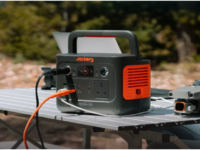Essential Steps To Build A Perfect Padel Court
The Padel tennis court construction is one of the racquet sports with the quickest rate of growth in the globe. Padel courts are increasingly being adopted by the proprietors and investors of sporting centers. However, constructing a high-quality padel court is a complicated process as many factors should be considered as they strongly influence the cost of construction and profitability in the long run. Learning of the two key factors will make you make a substantial investment that offers a great playing environment, corresponds to safety guidelines and will be profitable in the long term to both the players and the operators.
1. Location and Site Selection
The construction of an awesome padel court begins by identifying a good site. The site should be able to accommodate the basic size of the court i.e. 20m to 10m and some margin around the court to allow easy access into the court as well as the maintenance of the court. Consider first the accessibility of the players, the parking, and the closeness of the target demographics. Existing utilities, soil composition, and natural drainage patterns all have a big impact on the complexity and cost of building. Zoning regulations may apply in metropolitan areas, but suburban areas may provide greater flexibility but necessitate the construction of more infrastructure.
2. Ground Preparation and Foundation
Longevity of the court and ideal playing conditions are guaranteed by proper ground preparation. The foundation needs to be completely level, sturdy, and able to hold up the glass walls and court construction. Although the depth of excavation depends on the soil, it usually calls for the removal of 30 to 40 centimetres of topsoil and the installation of suitable drainage systems. Compacted hardcore basis, sand binding layer, and suitable surface material are the three levels of a well-designed foundation. Uneven surfaces, drainage issues, and early deterioration are the results of poor foundation work.
3. Surface Materials and Quality
The playing surface has a direct effect on player safety, game quality, and upkeep needs. The most common option is still artificial turf because it provides reliable ball bounce, superior traction, and resistance to weather. But not all artificial surfaces are created alike; performance qualities are greatly impacted by fibre length, density, and filler materials. Long-term durability, injury risk, and player comfort are all impacted by surface quality. When choosing materials, take environment into account because high or low temperatures can have an impact on surface lifespan and performance. Your choice of material should be influenced by the need for routine maintenance, taking into account the resources and knowledge at your disposal.
4.Glass Wall Installation
The walls which are made of glass are a must in the padel courts and they need to be installed at the right place and right way to make them safe and efficient. Glass panels have to be tempered to a predetermined thickness with 10-12 millimeters being used normally. Also, glass panels need to pass a test of safety criteria to resist the impact of balls and impacts when players touch these panels. Quality of glass is also different and differs among manufactures and has an influence on clarity, durability and safety of glass. Installation is specific and needs unique equipment and talent because misplacing might bring people into danger or performance problems.
5.Mesh and Fencing Systems
High-quality mesh fence above the glass walls keeps balls inside the playing area while permitting view and circulation. Usually 3–4 meters above the glass, mesh height necessitates strong support structures that can withstand ball impacts and wind loads. Durability and weather resistance are provided by galvanised steel mesh, while extra corrosion protection is offered by plastic-coated alternatives. Consistent ball rebound properties are maintained and sagging is avoided with proper tensioning. In order to allow players access while preserving the integrity of the court, entry gates must be placed carefully. Proper alignment and tension are ensured by professional installation, avoiding early failure or safety issues.
6. Lighting Requirements
Playing hours are increased and the whole facility experience is improved with enough lighting. Compared to conventional solutions, LED lighting systems provide continuous illumination, lower maintenance costs, and energy economy. The light should be uniformly spread on the surface of the court to eliminate the problem of the glare and shadow to enhance the quality of play. When designing lighting installations, take into account nearby properties because excessive spillage might cause annoyances. Energy management and customisation for various activities are made possible by smart lighting controls.
7.Drainage and Water Management
Water buildup can harm court surfaces and make playing conditions dangerous, therefore effective drainage helps avoid this. A strategically designed slope can move the water towards collecting areas since it normally is oriented at a slope of (1-2) percent without altering the bouncing quality of the ball. Subsurface drainage may be necessary in the areas where the water table is high or there is lots of rain. Drainage capacity ought to be constructed with seasonal variation in precipitation. The factors considered in professional design of drainage include soil conditions, specific needs of the facility as well as climate patterns in the area. Drainage systems remain functional for the duration of the court with regular maintenance.
8.Budget Planning and Cost Considerations
Missing budget proper planning ensures that a project is completed within budgetary limitations and cost under-runs. Construction costs are also significantly influenced by the location, material as well as the site conditions. More quality materials and professional installation are more costly in the short-term but they are more worthwhile in the long term since they have longer life and less maintenance costs. Continuing operating costs (utilities, maintenance, insurance and staffing) should be considered on project viability assessments. Choices of materials and building schedules may be influenced by financing alternatives.
Conclusion
The successful construction of a padel court presupposes thorough consideration of several interdependent aspects that can influence the immediate cost of the construction process and the success of the work in the long-term perspective. Any decision you make based on a decision as to which site to start with, as well as the final installation process determines the durability, quality and safety of the facility. A trustworthy padel court supplier company saudi arabia in your area can offer thorough direction during the building phase, guaranteeing that your investment satisfies both present requirements and long-term growth objectives.






